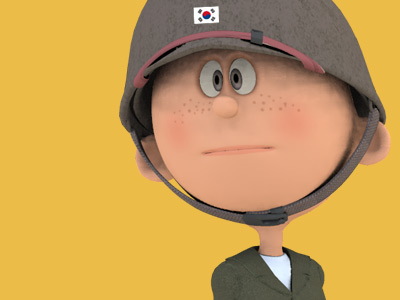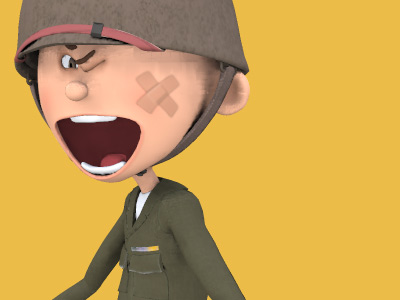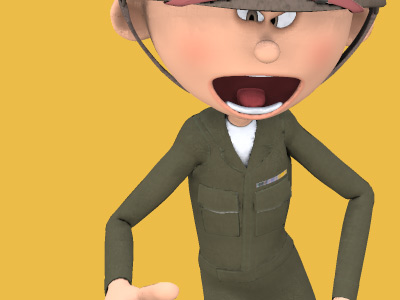Korean War 한국전쟁 (1950-1953)
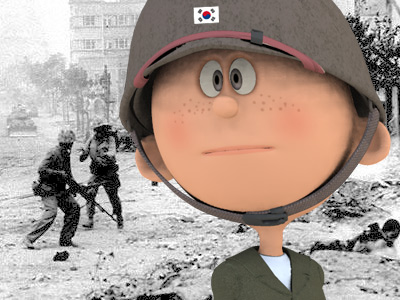
United Nations Response (July – August 1950)
On Saturday, 24 June 1950, U.S. Secretary of State Dean Acheson informed President Truman that the North Koreans had invaded South Korea. Truman and Acheson discussed a U.S. invasion response and agreed that the United States was obligated to act, paralleling the North Korean invasion with Adolf Hitler's aggressions in the 1930s, with the conclusion being that the mistake of appeasement must not be repeated.
Several U.S. industries were mobilized to supply materials, labor, capital, production facilities, and other services necessary to support the military objectives of the Korean War. However, United States The United States of America (U.S.A. or USA), commonly known as the United States (U.S. or US) or America, is a country in North America. It is the world's third-largest country by both land and total area. The United States shares land borders with Canada to its north and with Mexico to its south. The national capital is Washington, D.C., and the most populous city and financial center is New York City. President Truman later acknowledged that he believed fighting the invasion was essential to the American goal of the global containment of communism as outlined in the National Security Council Report 68 (NSC-68) (declassified in 1975):
The United States of America (U.S.A. or USA), commonly known as the United States (U.S. or US) or America, is a country in North America. It is the world's third-largest country by both land and total area. The United States shares land borders with Canada to its north and with Mexico to its south. The national capital is Washington, D.C., and the most populous city and financial center is New York City. President Truman later acknowledged that he believed fighting the invasion was essential to the American goal of the global containment of communism as outlined in the National Security Council Report 68 (NSC-68) (declassified in 1975):
Communism was acting in Korea, just as Hitler, Mussolini and the Japanese had ten, fifteen, and twenty years earlier. I felt certain that if South Korea was allowed to fall, Communist leaders would be emboldened to override nations closer to our own shores. If the Communists were permitted to force their way into the Republic of Korea without opposition from the free world, no small nation would have the courage to resist threat and aggression by stronger Communist neighbors.
In August 1950, the President and the Secretary of State obtained the consent of Congress to appropriate $12 billion for military action in Korea.
As an initial response, Truman called for a naval blockade of North Korea North Korea, officially the Democratic People's Republic of Korea (DPRK) is a country in East Asia, in the northern part of the Korean Peninsula. The capital and largest city is Pyongyang. The Korean Demilitarized Zone marks the boundary between North Korea and South Korea. The legitimacy of this border is not accepted by either side, as both states claim to be the legitimate government of the entire peninsula., and was shocked to learn that such a blockade could be imposed only 'on paper', since the U.S. Navy no longer had the warships with which to carry out his request. In fact, because of the extensive defense cuts and the emphasis placed on building a nuclear bomber force, none of the services were in a position to make a robust response with conventional military strength. General Omar Bradley, Chairman of the Joint Chiefs of Staff, was faced with re-organizing and deploying an American military force that was a shadow of its World War II
North Korea, officially the Democratic People's Republic of Korea (DPRK) is a country in East Asia, in the northern part of the Korean Peninsula. The capital and largest city is Pyongyang. The Korean Demilitarized Zone marks the boundary between North Korea and South Korea. The legitimacy of this border is not accepted by either side, as both states claim to be the legitimate government of the entire peninsula., and was shocked to learn that such a blockade could be imposed only 'on paper', since the U.S. Navy no longer had the warships with which to carry out his request. In fact, because of the extensive defense cuts and the emphasis placed on building a nuclear bomber force, none of the services were in a position to make a robust response with conventional military strength. General Omar Bradley, Chairman of the Joint Chiefs of Staff, was faced with re-organizing and deploying an American military force that was a shadow of its World War II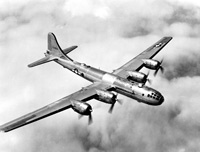 World War II or the Second World War, often abbreviated as WWII or WW2, was a world war that lasted from 1939 to 1945. It involved the vast majority of the world's countries—including all of the great powers—forming two opposing military alliances: the Allies and the Axis powers. World War II was a total war that directly involved more than 100 million personnel from more than 30 countries. World War II is generally considered to have begun on 1 September 1939, when Nazi Germany, under Adolf Hitler, invaded Poland. View World War II » counterpart. The impact of the Truman administration's defense budget cutbacks were now keenly felt, as American troops fought a series of costly rearguard actions. Lacking sufficient anti-tank weapons, artillery or armor, they were driven back down the Korean peninsula to Pusan. In a postwar analysis of the unpreparedness of U.S. Army forces deployed to Korea during the summer and fall of 1950, Army Major General Floyd L. Parks stated that "Many who never lived to tell the tale had to fight the full range of ground warfare from offensive to delaying action, unit by unit, man by man ... [T]hat we were able to snatch victory from the jaws of defeat ... does not relieve us from the blame of having placed our own flesh and blood in such a predicament."
World War II or the Second World War, often abbreviated as WWII or WW2, was a world war that lasted from 1939 to 1945. It involved the vast majority of the world's countries—including all of the great powers—forming two opposing military alliances: the Allies and the Axis powers. World War II was a total war that directly involved more than 100 million personnel from more than 30 countries. World War II is generally considered to have begun on 1 September 1939, when Nazi Germany, under Adolf Hitler, invaded Poland. View World War II » counterpart. The impact of the Truman administration's defense budget cutbacks were now keenly felt, as American troops fought a series of costly rearguard actions. Lacking sufficient anti-tank weapons, artillery or armor, they were driven back down the Korean peninsula to Pusan. In a postwar analysis of the unpreparedness of U.S. Army forces deployed to Korea during the summer and fall of 1950, Army Major General Floyd L. Parks stated that "Many who never lived to tell the tale had to fight the full range of ground warfare from offensive to delaying action, unit by unit, man by man ... [T]hat we were able to snatch victory from the jaws of defeat ... does not relieve us from the blame of having placed our own flesh and blood in such a predicament."
Acting on State Secretary Acheson's recommendation, President Truman ordered General MacArthur to transfer matériel to the Army of the Republic of Korea while giving air cover to the evacuation of U.S. nationals. The President disagreed with advisers who recommended unilateral U.S. bombing of the North Korean forces, and ordered the US Seventh Fleet to protect the Republic of China (Taiwan), whose government asked to fight in Korea. The United States denied ROC's request for combat, lest it provoke a communist Chinese retaliation. Because the United States had sent the Seventh Fleet to "neutralize" the Taiwan Strait, Chinese premier Zhou Enlai criticized both the United Nations (UN)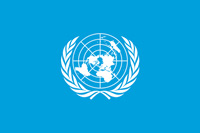 United Nations (UN) is an intergovernmental organization whose stated purposes are to maintain international peace and security, develop friendly relations among nations, achieve international cooperation, and be a centre for harmonizing the actions of nations. The UN was established after World War II with the aim of preventing future world wars, succeeding the League of Nations, which was characterized as ineffective. and U.S. initiatives as "armed aggression on Chinese territory."
United Nations (UN) is an intergovernmental organization whose stated purposes are to maintain international peace and security, develop friendly relations among nations, achieve international cooperation, and be a centre for harmonizing the actions of nations. The UN was established after World War II with the aim of preventing future world wars, succeeding the League of Nations, which was characterized as ineffective. and U.S. initiatives as "armed aggression on Chinese territory."
The Battle of Osan, the first significant American engagement of the Korean War, involved the 540-soldier Task Force Smith, which was a small forward element of the 24th Infantry Division which had been flown in from Japan Japan is an island country in East Asia. Beginning in the 12th century, political power was held by a series of military dictators (shōgun) and feudal lords (daimyō) and enforced by a class of warrior nobility (samurai). In the Meiji period, the empire adopted a Western-modeled constitution and pursued a program of industrialization and modernization. A global leader in the automotive, robotics and electronics industries, Japan has made significant contributions to science and technology. . On 5 July 1950, Task Force Smith attacked the North Koreans at Osan but without weapons capable of destroying the North Koreans' tanks. They were unsuccessful; the result was 180 dead, wounded, or taken prisoner. The KPA progressed southwards, pushing back the US force at Pyongtaek, Chonan, and Chochiwon, forcing the 24th Division's retreat to Taejeon, which the KPA captured in the Battle of Taejon; the 24th Division suffered 3,602 dead and wounded and 2,962 captured, including the Division's Commander, Major General William F. Dean.
Japan is an island country in East Asia. Beginning in the 12th century, political power was held by a series of military dictators (shōgun) and feudal lords (daimyō) and enforced by a class of warrior nobility (samurai). In the Meiji period, the empire adopted a Western-modeled constitution and pursued a program of industrialization and modernization. A global leader in the automotive, robotics and electronics industries, Japan has made significant contributions to science and technology. . On 5 July 1950, Task Force Smith attacked the North Koreans at Osan but without weapons capable of destroying the North Koreans' tanks. They were unsuccessful; the result was 180 dead, wounded, or taken prisoner. The KPA progressed southwards, pushing back the US force at Pyongtaek, Chonan, and Chochiwon, forcing the 24th Division's retreat to Taejeon, which the KPA captured in the Battle of Taejon; the 24th Division suffered 3,602 dead and wounded and 2,962 captured, including the Division's Commander, Major General William F. Dean.
By August, the KPA had pushed back the ROK Army and the Eighth United States Army to the vicinity of Pusan in southeast Korea. In their southward advance, the KPA purged the Republic of Korea's intelligents by killing civil servants and intellectuals. On 20 August, General MacArthur warned North Korean leader Kim Il-sung that he was responsible for the KPA's atrocities. By September, the UN Command controlled the Pusan perimeter, enclosing about 10% of Korea, in a line partially defined by the Nakdong River.
Although Kim's early successes had led him to predict that he would end the war by the end of August, Chinese leaders were more pessimistic. To counter a possible U.S. deployment, Zhou Enlai secured a Soviet commitment to have the Soviet Union Soviet Union, officially the Union of Soviet Socialist Republics (USSR), was a transcontinental country that spanned much of Eurasia from 1922 to 1991. The Soviet Union fall process began with growing unrest in the Union's various constituent national republics developing into an incessant political and legislative conflict between them and the central government. Estonia was the first Soviet republic to declare state sovereignty inside the Union. support Chinese forces with air cover, and deployed 260,000 soldiers along the Korean border, under the command of Gao Gang. Zhou commanded Chai Chengwen to conduct a topographical survey of Korea, and directed Lei Yingfu, Zhou's military advisor in Korea, to analyze the military situation in Korea. Lei concluded that MacArthur would most likely attempt a landing at Incheon. After conferring with Mao that this would be MacArthur's most likely strategy, Zhou briefed Soviet and North Korean advisers of Lei's findings, and issued orders to Chinese army commanders deployed on the Korean border to prepare for American naval activity in the Korea Strait.
Soviet Union, officially the Union of Soviet Socialist Republics (USSR), was a transcontinental country that spanned much of Eurasia from 1922 to 1991. The Soviet Union fall process began with growing unrest in the Union's various constituent national republics developing into an incessant political and legislative conflict between them and the central government. Estonia was the first Soviet republic to declare state sovereignty inside the Union. support Chinese forces with air cover, and deployed 260,000 soldiers along the Korean border, under the command of Gao Gang. Zhou commanded Chai Chengwen to conduct a topographical survey of Korea, and directed Lei Yingfu, Zhou's military advisor in Korea, to analyze the military situation in Korea. Lei concluded that MacArthur would most likely attempt a landing at Incheon. After conferring with Mao that this would be MacArthur's most likely strategy, Zhou briefed Soviet and North Korean advisers of Lei's findings, and issued orders to Chinese army commanders deployed on the Korean border to prepare for American naval activity in the Korea Strait.
HISTORY
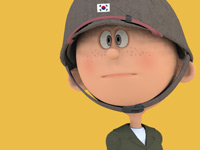
RESOURCES
This article uses material from the Wikipedia article "Korean War", which is released under the Creative Commons Attribution-Share-Alike License 3.0.
© Stories Preschool. All Rights Reserved.
